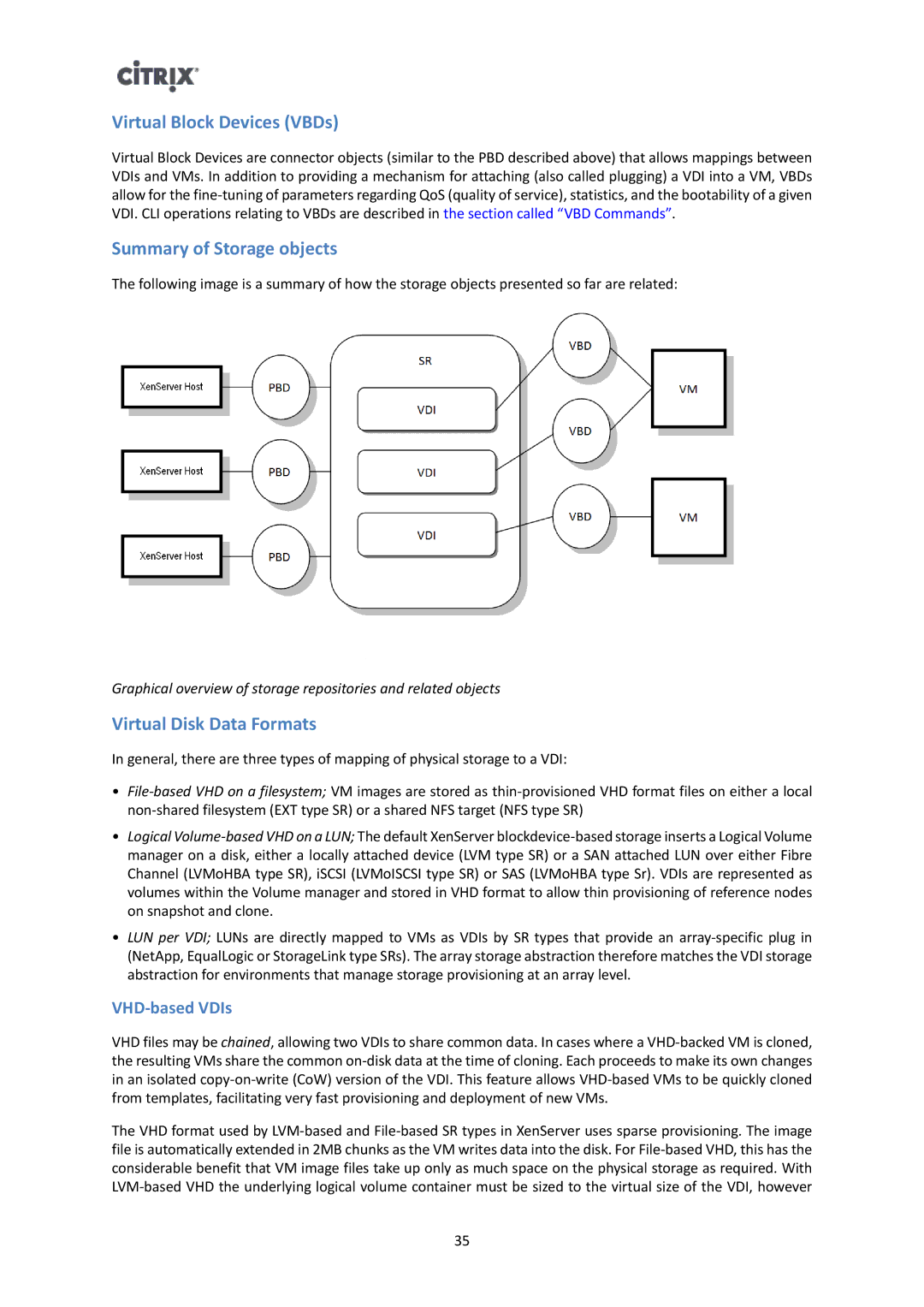
Virtual Block Devices (VBDs)
Virtual Block Devices are connector objects (similar to the PBD described above) that allows mappings between VDIs and VMs. In addition to providing a mechanism for attaching (also called plugging) a VDI into a VM, VBDs allow for the
Summary of Storage objects
The following image is a summary of how the storage objects presented so far are related:
Graphical overview of storage repositories and related objects
Virtual Disk Data Formats
In general, there are three types of mapping of physical storage to a VDI:
•
•Logical
•LUN per VDI; LUNs are directly mapped to VMs as VDIs by SR types that provide an
VHD-based VDIs
VHD files may be chained, allowing two VDIs to share common data. In cases where a
The VHD format used by
35
